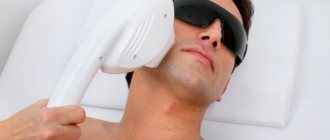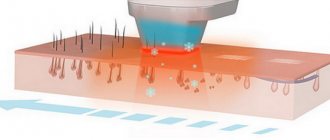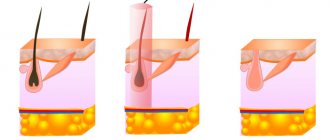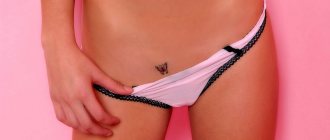What is hair removal, its types
The question of what hair removal is is asked today not only by women, but also by men. Many types of body epilation (vegetation removal) have been developed. Moreover, the procedure can be carried out both in professional salons and at home with your own hands. In the first case, you have to spend money, and in the second, you have to get nervous and experience discomfort.
Comparing the quality of hair removal, it becomes clear that the procedure carried out in a salon is much more effective. And new vegetation does not appear after it for longer. Effective types of removal have been developed that are recognized by experts and provide the best results. This:
- Electrolysis.
- Laser hair removal. Moreover, you can remove hair with a laser absolutely without pain.
- Photoepilation.
- Mechanical hair removal.
- Elos hair removal.
- Sugaring.
- Wax.
High-quality hair removal makes it possible to get rid of hair for at least thirty days. For unprofessional work, this period is several times shorter. Therefore, it is more rational to visit a salon specialist. As a result, this option will be even more economical. The result of professional hair removal is perfectly demonstrated in the photos.
Who is the procedure indicated for?
Getting rid of excess hair for a long period without pain, without “side effects” is the dream of everyone who takes care of themselves. It is clear that if there are no contraindications, hair removal (the photo is on the Internet) is suitable for any person.
Women and men with fair skin and dark hair will have good results. In this case, the process takes place without pain and quickly. Red-haired people, as well as blondes, will have to spend more time and undergo more sessions.
If the epithelium is very dark or tanned, you may experience some discomfort and pain. Depending on the method, there may even be burns and age spots. In the situation of using a diode laser beam, this will not happen. This photoepilation is suitable for any person (except gray hair).
On a note! In addition to solving a cosmetic problem, hair removal is also prescribed for medical reasons. For hypertrichosis (excessive hairiness), the use of laser hair removal will solve this problem for a long time.
Types of hair removal
It should be noted that hair removal is often a salon procedure. However, today you can find portable devices for home use on sale. But here we must immediately make a reservation that these devices have minimal power in order to protect the consumer from burns and other unpleasant consequences.
As a result, hair removal with home appliances does not give the expected result. Therefore, at the moment, it is better to do hair removal in a salon, with the help of professionals working with powerful and effective equipment.
Electrolysis
The method of hair removal, called electrolysis, is based on the fact that an electric discharge is applied to the hair root through an electrode in the form of tweezers or a very thin needle. The follicle becomes very hot, the hair papilla is destroyed under the influence of high temperature, the hair immediately dies and is removed with tweezers.
Video: how electrolysis is performed
In one session, only 15–20% of hairs can be removed from the surface of the skin. The fact is that hairs can be at the stage:
- anagen (active growth),
- catagen (regression phase),
- telogen (rest).
You can get rid of hair using electrolysis only when it is actively growing. In other cases, there is no access to the hair papilla, therefore, it cannot be destroyed.
The hair papilla can be destroyed only in the active growth phase
To completely remove hair, you will need 6–12 sessions. The interval between procedures should be 1–1.5 months.
Electrolysis has a large list of contraindications for use:
- CNS diseases;
- psychical deviations;
- diabetes;
- pregnancy and breastfeeding;
- skin diseases;
- neoplasms on the skin;
- presence of tattoos at the procedure site;
- varicose veins;
- herpes;
- wounds, scratches;
- malignant tumors;
- cardiovascular diseases;
- elevated temperature;
- pacemaker or uterine device;
- allergy to electrode alloys.
This type of hair removal has its advantages:
- The hair is removed forever. If the hair papilla is destroyed, a hair will never appear from it.
- The effect lasts from 6 months to 5 years (depending on the characteristics of the body), until dormant hairs awaken.
- Electrolysis can remove all types of hair, including gray, vellus, and light hair.
- The result is visible immediately.
- The method can be used on any part of the body.
Disadvantages of electrolysis:
- high pain of the method;
- long duration of one session (1.5–7 hours);
- the need for several procedures to completely remove hairs;
- risk of scarring after the procedure;
- high cost;
- many contraindications.
Laser and photoepilation
Laser and photoepilation are very similar to each other in the nature of their effect on hair, as well as in their effectiveness.
During laser hair removal, the hair follicle is destroyed under the influence of laser radiation, and during photoepilation, it is destroyed by high-pulse light flashes. Melanin, located in the hair shaft, absorbs the energy of a high-density light beam, heats up and leads to the destruction of capillaries, nerve endings, and sebaceous glands. After a few days, the dead hair falls out along with the root.
During a laser flash, melanin absorbs light energy and the hair shaft heats up, resulting in the destruction of capillaries and nerve endings that feed the hair
As with electrolysis, you will need to do several procedures at intervals of 20–45 days. The number of sessions is determined by the specialist, since it depends on the type and power of the equipment, as well as on the characteristics of the body and the area of the treated area.
It should be noted that the effectiveness of laser or light radiation on long hairs is much less, since in this case it is difficult for the energy beam to reach the hair follicle. The optimal hair length should be 2 mm.
Laser and photoepilation methods cannot cope with vellus and gray hair. These methods also do not work well on dark skin with light hair.
Video: how photoepilation works
Hair removal with a laser or light pulse has contraindications:
- diabetes;
- phlebeurysm;
- cuts, abrasions, wounds;
- tattoos;
- oncology;
- mental disorders;
- skin diseases;
- multiple neoplasms;
- diseases in the acute phase;
- allergic diseases;
- pregnancy;
- age up to 18 years.
The undoubted advantages of these hair removal methods include:
- long-lasting effect - the skin remains smooth from 6 months to several years;
- relative painlessness: modern lasers and light pulses may cause slight tingling during the procedure;
- Can be used on any part of the body;
- depending on skin type and hair color, you can select an individual laser or light beam supply mode;
- The procedure lasts relatively short - 20–60 minutes.
When choosing laser or photo hair removal, you need to remember the disadvantages of these methods:
- the need for several sessions;
- high cost;
- presence of contraindications;
- the likelihood of burns, swelling and hematomas during laser hair removal;
- inability to remove vellus, blond and gray hair.
Are there any contraindications?
Contraindications to the procedure can be absolute and relative. Absolute ones are:
- oncology (cancer);
- diabetic disease;
- gray hair and blond hair are not amenable to laser;
- development of varicose veins at the epilation site;
- hypertension, cardiac ischemia;
- exacerbation of herpetic pathology;
- keloid disease;
- psoriatic disease, eczema;
- epileptic seizures;
- blood diseases;
- allergy to one of the components used during hair removal.
Relative contraindications to the procedure are as follows:
- viruses and infections in the body;
- fresh tan;
- skin injuries at the epilation site, including small cuts and scratches;
- bearing a child and the period of breastfeeding.
To ensure maximum effect from photoepilation when removing excess hair and to prevent side effects, it is recommended to consult a specialist before performing it. He will determine contraindications for hair removal and recommend a technique that will help achieve success.
Procedure
If the wax is ready, proceed with the procedure:
- Apply a thin layer of wax using a cartridge or spatula in the direction of hair growth (warm wax: 1-2 mm; hot wax: 1 mm). The amount of coverage depends on the width and length of the strips, as well as the direction and density of hair growth: sometimes it is more convenient to work in small portions.
- Place a special strip on top and smooth along the hair growth 3-4 times. If you use hot film wax or sugar caramel, then depilatory strips are not needed - you can work with your hands. Moreover, the depilatory composition is not torn off immediately, but kept on the skin for a short time (according to the instructions, 10-60 seconds).
- After a few seconds (5-10 seconds for warm wax or 10-60 seconds for hot wax), with a sharp movement, tear off the strip with wax in the direction against hair growth, holding and pulling the skin at the end of the strip that you are pulling (otherwise, formation of bruises). Please note that you need to pluck at the most acute angle to the skin (less than 20°C), that is, parallel to the surface of the skin, so as not to break off the hair and not injure the skin.
Hair removal is difficult if:
- The skin remained oily.
- Wax layer too thin.
- Incorrect direction of wax removal.
- Slow wax removal.
- Hairs are too short (can be removed with tweezers).
How to prepare for hair removal?
Preparation affects the result of the work. Recommendations:
- 24 hours before hair removal, the photos of which are spectacular, you need to perform exfoliating procedures to cleanse the skin of dirt and dead particles of the epidermis. You need to apply a little scrub on your palms and massage the skin in the area where you plan to remove hair in different directions. It is worth carrying out initially by the clock, and then in the opposite direction. You must try to work smoothly so as not to damage the epithelium. During photoepilation, any scratches will only become larger. Scrubbing preparations can be made at home by combining 1 tablespoon of honey, a little granulated sugar and a little tea tree aroma oil. Cleansing the skin of dead particles should be gentle. The remains of the scrub are removed with warm water, and the body is carefully wiped with a dry cotton towel.
- Moisturizing the epithelium. If you properly saturate the skin, removal will be much easier and the pain will be less. Any body cream based on natural oils or animal fats is suitable for moisturizing. Immediately after scrubbing and drying with a soft towel, you can apply cream or lotion to your body. This is explained by the fact that after scrubbing, all the pores open, so the skin at this time is best at “taking up” the cream. This type of moisturizing treatment will also soften the hair, making it easier to epilate different areas the next day.
- On the day of photo hair removal, there is no need to further cleanse the skin or moisturize.
- When the hair is removed, you should wear a loose robe made of natural cotton material to avoid causing irritation.
- It is allowed to use a body scrub 2 days after removing excess hair.
If a person likes to remove unnecessary hair using a mechanical method (sugaring, epilator or waxing technique), it is necessary to take care in advance to ensure that the hair is not long. The ideal solution would be to go over the skin with a sharp razor 7 days before removal. In a few days, the hair will become the appropriate size - 3-5 mm.
Ways to remove unwanted hair
When you remove hair with waxing, you can expect results that last for several weeks, but waxing is not a permanent hair removal treatment in one go. Waxing is much more effective than shaving because... With its help, hair is removed from the roots, so it takes much longer for it to grow back and become noticeable.
- When epilating, the hair is removed along with the bulb and grows back for quite a long time.
- When depilating, the hair is trimmed or not completely removed, leaving a bulb.
We suggest you familiarize yourself with: Burdock oil for hair for thickness
How is the procedure performed?
Epilation is quite simple. The main thing is experience and adherence to the technique of the chosen hair removal method. The essence of epilation is the destruction of the follicles, after which the growth of vegetation stops. Each method is different. The most popular types of hair removal are:
- Laser removal. When epilating, a laser beam acts on the hair follicle, destroying it. However, the technique is only effective for dark hair. The ray will not be able to detect blond and gray hair and will miss it.
- Photoepilation. This technique is universal; it allows you to remove hair of any color. The device can also be used in any area. Removal occurs using photo light.
- Electrolysis. With this method, a special needle is inserted into each hair. Under the influence of electric current, the hair follicle is destroyed. The technique takes a small amount of time, as it is designed to treat small areas (above the mouth, armpits).
- Elos hair removal. This is the most modern technique. When removed, two types of energy operate simultaneously (electric current and light beam).
- Sugaring. Removal occurs using a special sugar paste.
- Wax. The skin is cleansed of hair using wax.
A specialist recommends a suitable method, and he will tell you in more detail what hair removal is.
Sugaring or sugar procedure
The substance contains glucose, fructose, a small amount of water and lemon juice. A type of depilation using sugaring is carried out in salons and at home. However, such material is difficult to apply and remove on your own. Therefore, it is better to resort to the services of a cosmetologist. He will carefully apply the sticky composition, remove hair, and cleanse the areas of the sticky substance.
There are two options for applying and removing sugaring from body areas:
- Manual. It involves smearing and removing the sweet and sticky substance with your hands. The procedure is usually carried out wearing gloves. Some craftsmen prefer to work without hand protection. Gloves do not always feel the correct application and removal of the composition. Tactile contact allows you to work more carefully with the client, without causing him discomfort from sticking gloves.
- Bandage. This type of sugaring uses a spatula and special paper strips. The master can work with or without gloves. The applied material is removed by adhering a paper strip to the sticky surface of the hair removal compound.
Sugaring.
Skin care after the procedure
After hair removal (this is also worth considering), the skin requires protection. Do not use deodorants, perfumes, or cosmetics containing fruit acids for 24 hours. You can't sunbathe for 2 days. It is recommended to apply products to the skin that slow down hair growth.
After procedures, irritation does not develop often, therefore. When a rash is detected, it may be an allergic reaction. Here antihistamines, for example, suprastin, will come to the rescue.
If the rash does not go away, you should consult a doctor. After the procedure, it is not recommended to go to the steam room for 24 hours. If a person has sensitive skin, after the laser hair removal procedure, redness and pain of the skin may develop, which will last even for several hours. A special softening spray or cream based on natural herbal extracts will help here.
On a note! It is important to understand that after laser photoepilation it is forbidden to sunbathe for a week and a half. There is a danger of pigmentation. After the laser procedure, exposed areas of the body should be lubricated with sunscreen to protect against UV rays.
Further care is standard, as usual - moisturizing, cleansing, softening.
Cautions
Do not wax if your skin is irritated or open. If your skin is too sensitive, give preference to the cold wax hair removal method (editor's note: in Russia this method is called warm wax hair removal), since this type of hair removal uses wax heated to a lower temperature than hot wax hair removal, which can burn and cause too much damage. sensitive skin.
Avoid direct sunlight, hot showers, and fragrance-containing cosmetics for 24 hours after waxing (Editor's note: We personally generally do not recommend using any products on your skin within 24 hours of waxing). This will help reduce irritation and redness. For more information about warnings and contraindications for waxing, see our article Warnings and contraindications for waxing.
We invite you to familiarize yourself with: Anti-gray hair shampoo for men and women: reviews of tint
Thus, waxing can lead to complete and permanent removal of unwanted body hair. However, wax hair removal should not be considered as a 100% reliable and reliable method used for this purpose, because... The principle described above does not work in all cases.
Price
Any epilation procedure is not dangerous and does not cause any particular discomfort, although there is pain during removal. The cost of the service depends on the chosen method. When the treatment area is small, the price is lower. A bikini costs from 2500 rubles, the area above the lips from 600 rubles, everything is individual.
What hair removal is and how to do it at home or with a salon specialist is useful to know for those who care about their appearance. The procedure is simple. At the same time, you can always have a well-groomed appearance of your intimate area.
What is the difference between hair removal and depilation
To clearly understand the fundamental difference between epilation and depilation, you need to know the structure of the hair, more precisely, its root part, and how one or another method of removal affects it.
The hair root is formed in the follicle. The follicle is a complex element consisting of several components:
- The hair funnel is a depression in the skin where the hair root meets the hair shaft.
- Hair papilla - consists of nerve fibers and capillaries that nourish the hair follicle. This formation is located at the very bottom of the follicle. It controls the condition and growth of the hair. If the follicular papilla is destroyed, then the hair also dies.
- The root sheath is the part of the follicle that surrounds the hair root and also takes part in hair growth.
- The pilaris muscle, sebaceous and sweat glands are adjacent to the hair follicle and ensure normal hair development.
The hair follicle consists of several elements
Drawing an analogy with botany, a follicle can be imagined as a pot of soil, which provides the plant growing in it with all the nutritional components.
Depilation is a procedure for removing hair from the surface of the skin, in which the hairs can be removed with or without the root, but the follicles are not destroyed . That is, the plant can be cut, but its roots will give rise to new shoots, or it can be pulled out, but the pot of soil remains a nutrient medium for the appearance of new shoots.
Epilation is the elimination of hairs from the surface of the body, accompanied by the destruction of hair follicles. This means that the pot with the soil is destroyed, the plant has nowhere to get food from, and it dies.










